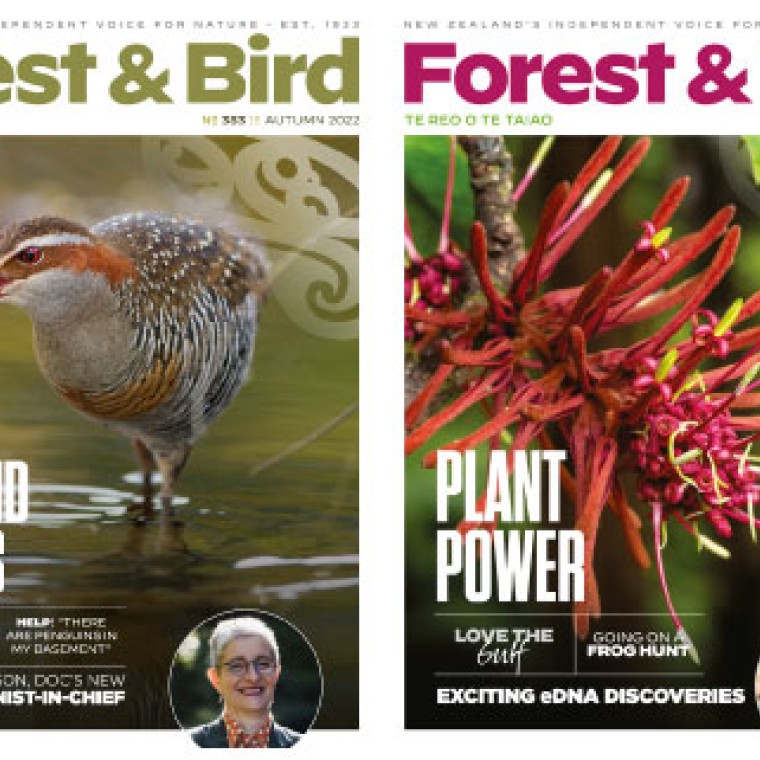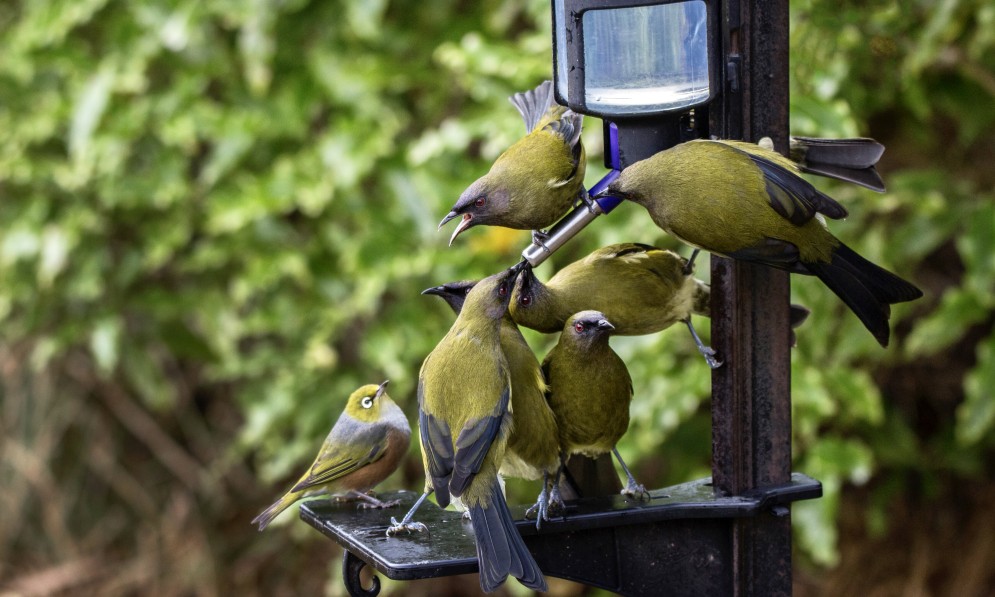We look at some environmentally friendly ways to attract native birds to your garden while avoiding bad practices that could harm their health. By Dr Daria Erastova
Backyard bird feeding is an enjoyable hobby that many Kiwis enjoy. Previous studies have found around half of New Zealand households provide food for garden birds in their neighbourhood.
Forest & Bird magazine
A version of this story was first published in the Winter 2023 issue of Forest & Bird magazine.
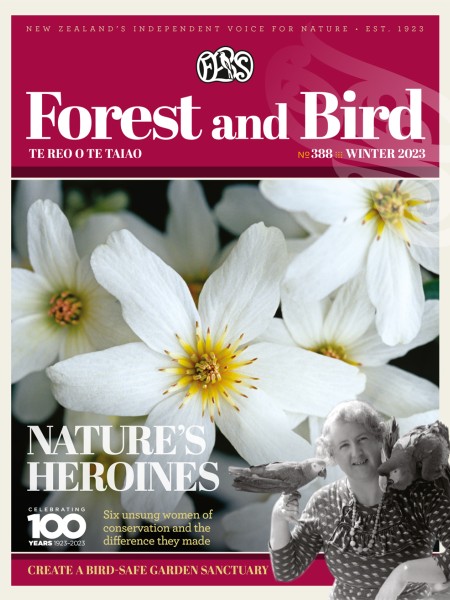
This pastime attracts birds that people can observe up close, increasing our quality of life, especially in urban areas. If done correctly, it can also provide a valuable supplementary food source for our native species, especially during winter when natural foods are scarce.
But it’s important to choose the right food and feeder type for the particular species we want to attract rather than copy practices in other countries, such as the UK, that could be detrimental for Aotearoa New Zealand’s already threatened native species.
New Zealand studies show bread and seed are the most commonly offered food in our cities.
Unfortunately, such practice is harmful because it attracts introduced grain-eating species, such as starlings, doves, and mynas, that outnumber native species.
On top of that, some grain-eating species – for example, house sparrows – can carry dangerous diseases such as salmonellosis that they can pass onto other birds, or even humans, through soiling the feeding equipment or the area around them.
Native garden birds have specific dietary requirements to stay healthy and thrive – but none of them are grain eating. Some eat invertebrates (riroriro grey warbler, pīwakawaka fantail), flower nectar (korimako bellbird, tūī), fruit (tauhou silvereye, kākā), or tree leaves (kererū).
So offering these types of food can support taonga species and bring them into our lives. But how safe is it to offer such foods to native birds?
SUGAR WATER: In a recent research study, my colleagues and I looked at how backyard sugar-water feeding, which is an achievable alternative to flower nectar, affected tūī, korimako, and tauhou.
We found birds that visited feeders with high sugar concentrations (1 cup per litre or more) in winter had better body conditions. In addition, we sampled the feeders and the visiting birds for nasty pathogens such as salmonella, and they all returned negative. Compared to bread and seed feeding, sugar water seems to be relatively safe for native birds and humans as long as the following rules are followed.
- Always use one of the commercially available Tui Nectar Feeder™, Topflite Nectar Nutra feeder™, or PekaPeka™ bird feeders. That will stop unwanted birds from soiling sugar water.
- Regularly clean your feeding stations to reduce pathogen growth.
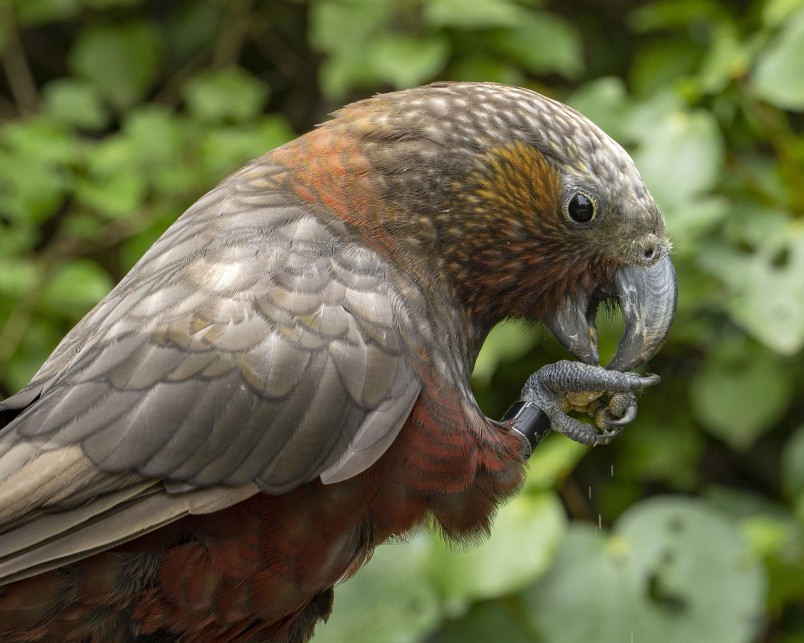
Our kākā are partial to fruit. Image Glenn Turner
FRUIT: It is a good idea to offer fruit halves for fruit eating birds such as tauhou and kākā. However, people should wash fruit before offering it to remove wax and other added chemicals that make fruit look appealing. Do not offer rotten fruit, as the mould and bacteria growing on them can be harmful to birds.
INSECTS: For birds that eat insects and spiders, a freshly hard-boiled egg can serve as a great alternative protein source. Even better, build a bug hotel and plant native trees to encourage all sorts of creatures into your garden. This can provide a great food source for visiting birds.
WATER: Another important aspect of attracting birdsto urban gardens is providing water for them to drink and bathe in, especially during hot and dry months. A bird bath can be as simple as a shallow dish, but it is crucial to keep the water level very shallow (4–5cm) because there is a serious risk of drowning for small native birds. It is important to change the water in your bird bath regularly to prevent the growth of algae and bacteria.
WHAT NOT TO FEED: There are definitely foods we do not recommend for backyard bird feeding. As mentioned earlier, bread and seed feeding is associated with a risk of pathogen transmission between birds and humans, and discourages native birds. Food scraps and leftovers can attract mice, rats, hedgehogs, and possums. Cheese contains too much salt and microorganisms, and it can be harmful to birds’ health. Make sure the offered food is fresh and free from dirt and mould.
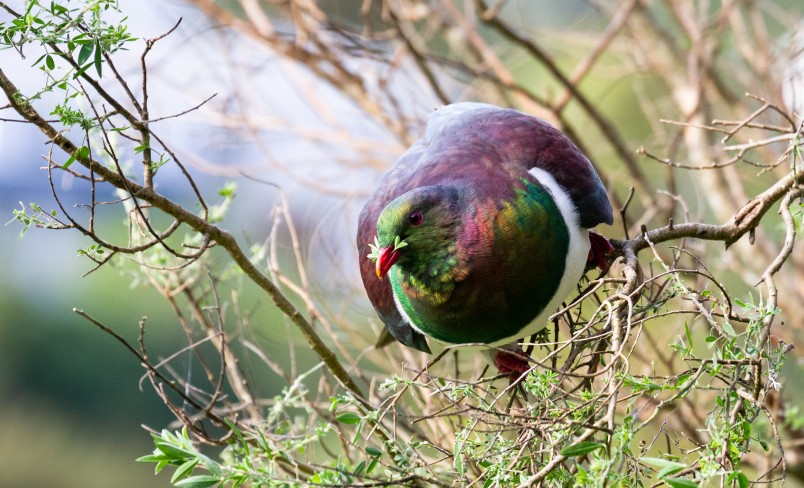
A leaf-eating kererū. Image Heidi Benson
TIPS FOR SUCCESS: The most important thing is to offer sugar water in a concealed container and pin it to the top of a tall pole. This will keep the rats and other pests away and protects food from soil bacteria contamination.
Install bird feeders for fruit and eggs on tall poles too. A separately standing pole away from trees and fences will discourage bird predators from climbing it and gives birds an unobstructed view of potential hazards.
Keep your bird feeder clean and well maintained. A dirty feeder can become a breeding ground for bacteria and disease, which can harm birds and humans. We recommend cleaning feeding stations twice a week with hot water and scrubbing. Avoid using bleach or other chemicals that may harm birds.
In addition to providing food and water, you can also create a bird-friendly habitat in your backyard. This can include planting indigenous trees and shrubs that provide natural foods, shelter, and nesting sites for birds, as well as leaving areas of your lawn unmowed to provide habitat for invertebrates.
Finally, carrying out backyard pest control is an easy way to make a difference for native birds that struggle because of introduced predators.
In conclusion, providing birds with supplementary food, especially in winter, is an affordable and appealing way to interact with local wildlife. But this alone will not boost your local bird population. The long-term answer is to transform our backyards and city parks into bird-friendly habitats.
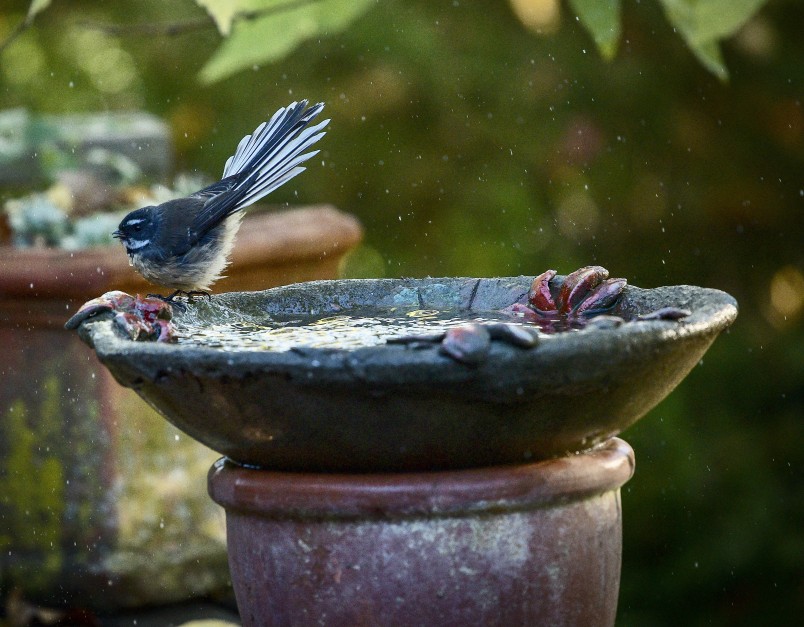
Bathtime for one happy pīwakawaka fantail. Image John Nelson
Make your garden bird friendly
If you want to keep wild birds flourishing in your garden, controlling introduced mammals is a must.
Stoats, rats, possums, and hedgehogs are common predators that kill and maim birds, eggs, and chicks in our backyards, in the city as well as rural areas.
Trapping is a simple measure you can do at home to make a difference. Predator Free New Zealand has a handy guide to choosing the right trap on its website
If you have a cat that goes outside, you can make it more bird friendly by fitting a bell on its collar, feeding it at regular times, and keeping it inside at night.
Bird feeding stations should be over 1.7m high or hung from a sturdy branch to keep them out of the way of predators and pets.
Why not try some of these measures and see what difference it makes to the birds visiting your garden? Maybe you can help bring back the dawn chorus to your neighbourhood.
